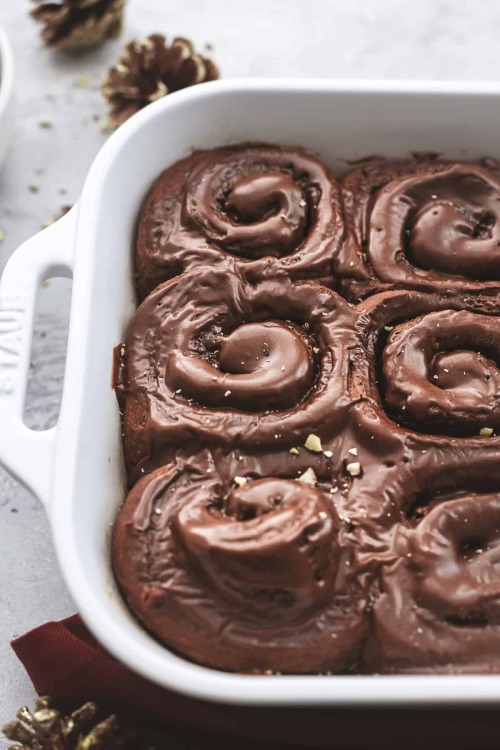Chocolate Cinnamon Rolls With Hazelnut Icing



Chocolate cinnamon rolls with hazelnut icing
More Posts from Nootanut and Others


hattu_homedeco


溶けない雪だるまみるくクリーム大福

https://www.instagram.com/p/CbVsuxDs85z/

x
Mama Bree's Magical Powders
Finally, all my powder recipes in one place! Go nuts, witchlings.
All-Purpose Cursing Powder
Banishing Powder
Clean House Powder
“Eye of Sauron” Revelation Powder
Heal Thy Heart Powder
Hexbreaker Powder
Jackpot Powder
Lucky Day Powder
“Outta My Way” Powder
Peacekeeper Powder
Persuasion Powder
STFU Powder
Traveler’s Luck Powder
Truthfinder Powder
For those of you who may not be able to find herbs locally, here are some online suppliers who consistently have affordable and high-quality products.
Ruth Roy’s Wellcat Herbs - A highly reputable seller with quality herbs, teas, incense, and botanicals. Also runs a booth every year at the Pennsylvania Renaissance Faire. (*HIGHLY RECOMMEND*)
Starwest Botanicals - Bulk herbs, spices, oils, and teas. Good amount of organic and Fair Trade products, as well as supplies for holistic medicine and tea-making.
Mountain Rose Herbs - Bulk herbs, spices, and sundries. Also carries organic products and essential oils, and has link to schools that offer courses in herbalism and herbology.
The Magickal Cat - Online shop with just about everything you could want for your craft, from herbs to books to cauldrons, and everything in between. Reliable shipping and excellent customer service.
Bulk Apothecary - Bulk herbs, spices, and oils, in addition to materials for the home production of soap, candles, wine, and beer.
For more online resources and information on herb magic and spells, check out my website here.



anna_petrovvna__

RECIPE: Coconut Milk Chicken Adobo (from Filipinx by Angela Dimayuga and Ligaya Mishan)
ah • DOH • boh
Adobo is probably the Filipino dish best known and least understood by Westerners. Like the name of the Philippines itself—imposed by Spanish colonialists in the sixteenth century in honor of their king, Philip II—it bears the lexical imprint of a foreign empire. In 1613, a Franciscan friar, attempting to compile a Tagalog dictionary, reached for the Spanish verb adobar to describe the dousing of ingredients with vinegar, to season and pickle. But that technique of preservation, essential in a tropical climate, long predated his arrival. Adobo is an indigenous dish, and one that contains multitudes, with no two recipes alike.
Vinegar is the constant. Here I use coconut vinegar (check out the recipe in the book if you’re feeling ambitious and want to make your own!), along with coconut milk and coconut oil—three forms of coconut, to bring silkiness without heaviness. (Coconut milk adobo, or adobo sa gata, is a tried-and-true variation in the Philippines but a little less common in the U.S.) It’s just as good if you substitute rice vinegar or diluted white or apple cider vinegar. And the chicken is just a suggestion: You could roast or steam a whole fish and pour the adobo over it, or sear mushrooms, fresh langka (jackfruit), or big meaty chunks of cauliflower and throw them in as the stew simmers down and turns thick.
Serves 6 to 8
2 tablespoons coconut oil, store-bought or homemade
2 teaspoons whole black peppercorns
1 teaspoon coarsely cracked black pepper
½ teaspoon red pepper flakes
4 pounds (1.8 kg) chicken drumsticks and thighs, bone in and skin on
15 garlic cloves, smashed and peeled
1 cup (240 ml) unsweetened, full-fat coconut milk
½ cup (120 ml) coconut vinegar (store-bought or homemade) or rice vinegar
½ cup (120 ml) soy sauce
8 bay leaves, fresh or dried
1 whole fresh serrano chile
Steamed rice, for serving
In a large pot, heat the coconut oil on medium until shimmering. Add the whole peppercorns, coarsely cracked black pepper, and red pepper flakes. Lay the drumsticks and thighs in the pan, skin side down, and raise the heat to medium high. Cook for about 5 minutes, resisting the urge to poke and prod; just let the chicken cook undisturbed, until the fat starts to render, melting into the pan, and the skin turns slightly brown. Using kitchen tweezers or tongs, flip over the chicken.
Add the garlic, coconut milk, vinegar, soy sauce, bay leaves, serrano chile, and 1 cup (240 ml) water. Let the mixture come to a boil. Put a lid on the pot, reduce the heat to medium low, and simmer for 1 to 1½ hours, stirring occasionally. The chicken should feel loose, almost—but not yet—ready to slip off the bone.
Remove the lid, raise the temperature to medium high, and reduce the sauce by cooking uncovered for another 15 minutes, stirring occasionally, until the sauce is thick as velvet.
Serve over rice, to soak up the sauce.

In her debut cookbook, acclaimed chef Angela Dimayuga shares her passion for Filipino food with home cooks.
Filipinx offers 100 deeply personal recipes—many of them dishes that define home for Angela Dimayuga and the more than four million people of Filipino descent in the United States. The book tells the story of how Dimayuga grew up in an immigrant family in northern California, trained in restaurant kitchens in New York City—learning to make everything from bistro fare to Asian-American cuisine—then returned to her roots, discovering in her family’s home cooking the same intense attention to detail and technique she’d found in fine dining.
In this book, Dimayuga puts a fresh spin on classics: adobo, perhaps the Filipino dish best known outside the Philippines, is traditionally built on a trinity of soy sauce, vinegar, and garlic—all pantry staples—but add coconut milk, vinegar, and oil, and it turns lush and silky; ribeye steaks bring extra richness to bistek, gilded with butter and a bright splash of lemon and orange juice. These are the punches of flavor and inspired recipes that home cooks have been longing for.
A modern, welcoming resource for this essential cuisine, Filipinx shares exciting and approachable recipes everyone will wholeheartedly embrace in their own kitchens.
For more information, click here.

https://www.instagram.com/p/Cb2VEW_shbg
-
 keebiekneebiez reblogged this · 1 year ago
keebiekneebiez reblogged this · 1 year ago -
 wildernestt reblogged this · 1 year ago
wildernestt reblogged this · 1 year ago -
 versaceangel777 liked this · 1 year ago
versaceangel777 liked this · 1 year ago -
 puddlescove liked this · 1 year ago
puddlescove liked this · 1 year ago -
 saltmatchescandlewax reblogged this · 1 year ago
saltmatchescandlewax reblogged this · 1 year ago -
 yeahleelee reblogged this · 1 year ago
yeahleelee reblogged this · 1 year ago -
 y2kreid liked this · 1 year ago
y2kreid liked this · 1 year ago -
 bandgirl365 reblogged this · 2 years ago
bandgirl365 reblogged this · 2 years ago -
 bandgirl365 liked this · 2 years ago
bandgirl365 liked this · 2 years ago -
 crosswriter97 liked this · 2 years ago
crosswriter97 liked this · 2 years ago -
 what-is-the-irony-of-grass liked this · 2 years ago
what-is-the-irony-of-grass liked this · 2 years ago -
 thabiddie23 liked this · 2 years ago
thabiddie23 liked this · 2 years ago -
 cardierreh15 reblogged this · 2 years ago
cardierreh15 reblogged this · 2 years ago -
 cardierreh15 liked this · 2 years ago
cardierreh15 liked this · 2 years ago -
 itrust-ed-u liked this · 2 years ago
itrust-ed-u liked this · 2 years ago -
 becbex liked this · 2 years ago
becbex liked this · 2 years ago -
 tobedeveloped liked this · 2 years ago
tobedeveloped liked this · 2 years ago -
 thedesertdove reblogged this · 2 years ago
thedesertdove reblogged this · 2 years ago -
 satans-hippy liked this · 2 years ago
satans-hippy liked this · 2 years ago -
 deliciousbitz reblogged this · 2 years ago
deliciousbitz reblogged this · 2 years ago -
 felinemau reblogged this · 2 years ago
felinemau reblogged this · 2 years ago -
 beautifullifeofsweetgirl liked this · 2 years ago
beautifullifeofsweetgirl liked this · 2 years ago -
 808hawaiianman reblogged this · 2 years ago
808hawaiianman reblogged this · 2 years ago -
 808hawaiianman liked this · 2 years ago
808hawaiianman liked this · 2 years ago -
 cicrac reblogged this · 2 years ago
cicrac reblogged this · 2 years ago -
 cicrac liked this · 2 years ago
cicrac liked this · 2 years ago -
 leigh-89 reblogged this · 2 years ago
leigh-89 reblogged this · 2 years ago -
 themrbinno liked this · 2 years ago
themrbinno liked this · 2 years ago -
 darkbone-x liked this · 2 years ago
darkbone-x liked this · 2 years ago -
 thedesertdove liked this · 2 years ago
thedesertdove liked this · 2 years ago -
 hirunoka liked this · 2 years ago
hirunoka liked this · 2 years ago -
 dns992 liked this · 2 years ago
dns992 liked this · 2 years ago -
 nootanut reblogged this · 2 years ago
nootanut reblogged this · 2 years ago -
 yo--ta--ka reblogged this · 2 years ago
yo--ta--ka reblogged this · 2 years ago -
 zoltanjm reblogged this · 2 years ago
zoltanjm reblogged this · 2 years ago -
 zoltanjm liked this · 2 years ago
zoltanjm liked this · 2 years ago -
 maiifood reblogged this · 2 years ago
maiifood reblogged this · 2 years ago -
 rai-r liked this · 2 years ago
rai-r liked this · 2 years ago -
 mediterranean-tangerine reblogged this · 2 years ago
mediterranean-tangerine reblogged this · 2 years ago -
 gayeddie-saved-me liked this · 2 years ago
gayeddie-saved-me liked this · 2 years ago -
 spencersbakery reblogged this · 2 years ago
spencersbakery reblogged this · 2 years ago


